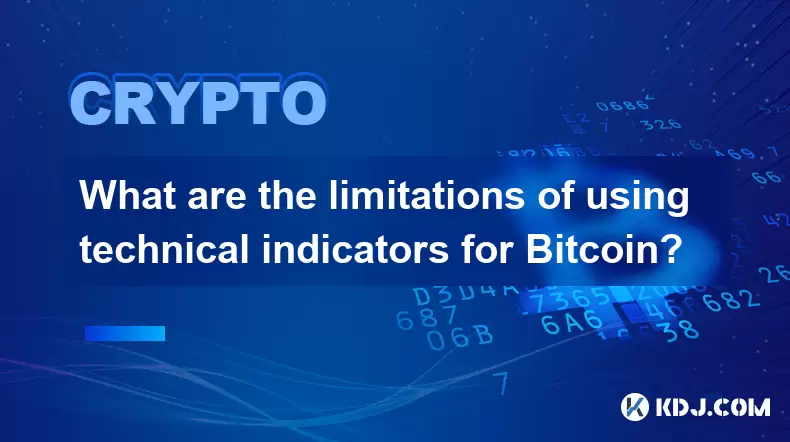-
 Bitcoin
Bitcoin $108,802.0448
0.59% -
 Ethereum
Ethereum $2,556.7655
1.66% -
 Tether USDt
Tether USDt $1.0001
-0.02% -
 XRP
XRP $2.2765
2.15% -
 BNB
BNB $662.6901
1.16% -
 Solana
Solana $151.4936
2.68% -
 USDC
USDC $0.9999
0.00% -
 TRON
TRON $0.2857
0.49% -
 Dogecoin
Dogecoin $0.1704
4.33% -
 Cardano
Cardano $0.5847
1.63% -
 Hyperliquid
Hyperliquid $39.2227
-0.47% -
 Sui
Sui $2.9110
0.60% -
 Bitcoin Cash
Bitcoin Cash $491.8681
1.55% -
 Chainlink
Chainlink $13.4311
2.12% -
 UNUS SED LEO
UNUS SED LEO $9.0273
0.09% -
 Avalanche
Avalanche $18.1653
1.64% -
 Stellar
Stellar $0.2442
2.69% -
 Toncoin
Toncoin $2.8966
5.36% -
 Shiba Inu
Shiba Inu $0.0...01180
2.95% -
 Litecoin
Litecoin $87.8955
1.49% -
 Hedera
Hedera $0.1573
1.30% -
 Monero
Monero $316.6881
0.88% -
 Polkadot
Polkadot $3.3938
1.37% -
 Dai
Dai $0.9999
-0.01% -
 Ethena USDe
Ethena USDe $1.0001
-0.01% -
 Bitget Token
Bitget Token $4.3976
0.08% -
 Uniswap
Uniswap $7.4020
6.83% -
 Pepe
Pepe $0.0...01000
3.22% -
 Aave
Aave $276.6854
2.05% -
 Pi
Pi $0.4586
-0.62%
Should I trust on-chain metrics or technical indicators more for Bitcoin?
On-chain metrics like SOPR and MVRV offer deep insights into Bitcoin's network activity and investor behavior, complementing technical indicators for more informed trading decisions.
Jul 06, 2025 at 04:56 pm

Understanding On-Chain Metrics
On-chain metrics refer to data derived directly from the blockchain. These include metrics like transaction volume, active addresses, exchange inflows/outflows, and supply distribution. For Bitcoin, these indicators offer insight into network activity and user behavior. Many analysts rely on platforms like Glassnode or Chainalysis to access this data.
One of the most trusted on-chain metrics is SOPR (Spent Output Profit Ratio), which measures whether investors are selling at a profit or loss. A SOPR above 1 indicates that holders are realizing gains, while below 1 suggests losses are being crystallized. Another popular metric is MVRV (Market Value to Realized Value), which compares the current market cap with the realized cap to assess overvaluation or undervaluation.
Important:
On-chain data provides real-time insights into how users interact with the Bitcoin network, offering a more fundamental perspective compared to traditional technical analysis.Exploring Technical Indicators
Technical indicators are mathematical calculations based on price, volume, and open interest. Common tools in the Bitcoin space include Moving Averages (MA), Relative Strength Index (RSI), MACD (Moving Average Convergence Divergence), and Bollinger Bands. These tools help traders identify trends, momentum shifts, and potential reversal points.
For example, the 200-day Moving Average is widely followed by institutional and retail traders alike as a long-term trend filter. When Bitcoin's price is above this average, it often signals a bullish phase. Similarly, RSI above 70 may indicate overbought conditions, while below 30 could signal oversold levels.
Important:
Technical indicators are reactive rather than predictive, meaning they reflect past price action and may lag behind sudden market moves.Comparing Data Sources and Reliability
The primary difference between on-chain metrics and technical indicators lies in their data sources. On-chain metrics pull information directly from the blockchain, making them less susceptible to manipulation. In contrast, technical indicators depend on price feeds, which can be influenced by short-term volatility or exchange-specific anomalies.
Platforms like Coinbase or Binance might show different liquidity profiles, which can distort technical readings across exchanges. On-chain data, however, remains consistent across all nodes and wallets.
Important:
On-chain metrics provide a broader, more transparent view of Bitcoin’s ecosystem, including miner behavior, whale movements, and long-term holder accumulation patterns.Use Cases and Practical Applications
When evaluating whether to trust on-chain metrics or technical indicators more, it’s essential to consider use cases:
- Short-term traders often rely on technical indicators for quick entry and exit points.
- Long-term investors may prefer on-chain data to gauge macro trends such as accumulation phases or capitulation events.
For instance, during a bear market, on-chain data may reveal increasing whale accumulation, suggesting a potential bottom forming even when technical indicators remain bearish. Conversely, during a rally, technical indicators like RSI crossing into overbought territory might warn of an imminent correction.
Important:
Neither approach should be used in isolation; combining both can enhance decision-making accuracy and reduce false signals.Common Pitfalls and Misinterpretations
Misinterpreting on-chain metrics can lead to flawed conclusions. For example, a spike in exchange outflows doesn’t always mean whales are withdrawing funds for long-term holding — sometimes it's just movement between wallets or cold storage rebalancing.
Similarly, technical indicators can generate misleading signals during low-volume periods or amid news-driven spikes. The MACD crossover strategy, for instance, might trigger a buy signal just before a major regulatory announcement causes a sharp sell-off.
Important:
Context matters — always cross-reference any single indicator with other forms of data before making investment decisions.Frequently Asked Questions
- Can on-chain metrics predict Bitcoin price movements accurately?
While on-chain metrics offer valuable insights into network health and investor sentiment, they cannot guarantee precise price predictions. They work best when combined with other analytical tools. - Are technical indicators reliable during high volatility?
During extreme volatility, technical indicators can become erratic. False breakouts and whipsaws are common, so traders should apply caution and possibly widen stop-loss margins. - Should beginners focus more on on-chain data or technical charts?
Beginners may find technical charts easier to understand initially. However, learning basic on-chain metrics like MVRV or SOPR can significantly improve long-term investment strategies. - Do professional traders use both on-chain and technical tools?
Yes, many institutional and experienced retail traders integrate both types of analysis to validate signals and avoid biases in decision-making.
Disclaimer:info@kdj.com
The information provided is not trading advice. kdj.com does not assume any responsibility for any investments made based on the information provided in this article. Cryptocurrencies are highly volatile and it is highly recommended that you invest with caution after thorough research!
If you believe that the content used on this website infringes your copyright, please contact us immediately (info@kdj.com) and we will delete it promptly.
- Litecoin Breakout Watch: What Traders Need to Know Now
- 2025-07-06 16:50:13
- Bitcoin, Solana, Ethereum: Decoding the Latest Buzz on the Blockchain
- 2025-07-06 16:50:13
- Widnes Resident's 50p Could Be Your Ticket to Easy Street: Rare Coin Mania!
- 2025-07-06 16:55:13
- Bitcoin, Solaris Presale, and Token Rewards: What's the Buzz?
- 2025-07-06 16:55:13
- Ethereum Under Pressure: Price Drop Amid Global Uncertainties
- 2025-07-06 17:00:13
- XRP, SEC Case, and Prosperity: A New Era for XRP Holders?
- 2025-07-06 17:10:13
Related knowledge

What is the Woodies CCI indicator and can it be used for Bitcoin?
Jul 04,2025 at 05:14pm
Understanding the Woodies CCI IndicatorThe Woodies CCI indicator is a variation of the traditional Commodity Channel Index (CCI), which was originally developed by Donald Lambert. The standard CCI measures the current price level relative to an average price over a given period, typically 14. However, the Woodies version modifies this calculation to mak...

How to use indicators to trade the opening range breakout for Bitcoin CME futures?
Jul 05,2025 at 07:35pm
What Is the Opening Range Breakout Strategy?The opening range breakout (ORB) strategy is a popular trading technique used in both traditional markets and cryptocurrency futures, particularly for Bitcoin on the CME. This method involves identifying a specific price range formed during the early phase of a trading session and then taking positions when th...

What does a bearish cross on the Stochastic RSI mean for Bitcoin?
Jul 05,2025 at 07:18pm
Understanding the Stochastic RSI IndicatorThe Stochastic RSI (Relative Strength Index) is a momentum oscillator used in technical analysis to identify overbought or oversold conditions in an asset's price. It combines two well-known indicators — the RSI and the Stochastic Oscillator — to provide more nuanced signals than either could alone. The Stochast...

What are the limitations of using technical indicators for Bitcoin?
Jul 06,2025 at 03:35am
Understanding the Role of Technical Indicators in Cryptocurrency TradingIn the realm of Bitcoin trading, technical indicators are tools used by traders to analyze historical price data and volume to predict future price movements. These indicators—such as Moving Averages, Relative Strength Index (RSI), and MACD—are widely adopted across traditional fina...

How to use the historical volatility indicator for Bitcoin options trading?
Jul 06,2025 at 04:14am
Understanding the Historical Volatility IndicatorThe historical volatility indicator (HV) is a statistical measure used to assess the price fluctuations of an asset over a specific time period. In the context of Bitcoin options trading, this metric helps traders evaluate past price movements to anticipate potential future swings. Unlike implied volatili...

Best indicator for confirming chart patterns like head and shoulders on Bitcoin
Jul 06,2025 at 01:07pm
Understanding Chart Patterns in Cryptocurrency TradingIn the volatile world of Bitcoin trading, chart patterns serve as critical tools for identifying potential price movements. Among these, the head and shoulders pattern is one of the most reliable reversal indicators. Recognizing this formation requires not only visual identification but also confirma...

What is the Woodies CCI indicator and can it be used for Bitcoin?
Jul 04,2025 at 05:14pm
Understanding the Woodies CCI IndicatorThe Woodies CCI indicator is a variation of the traditional Commodity Channel Index (CCI), which was originally developed by Donald Lambert. The standard CCI measures the current price level relative to an average price over a given period, typically 14. However, the Woodies version modifies this calculation to mak...

How to use indicators to trade the opening range breakout for Bitcoin CME futures?
Jul 05,2025 at 07:35pm
What Is the Opening Range Breakout Strategy?The opening range breakout (ORB) strategy is a popular trading technique used in both traditional markets and cryptocurrency futures, particularly for Bitcoin on the CME. This method involves identifying a specific price range formed during the early phase of a trading session and then taking positions when th...

What does a bearish cross on the Stochastic RSI mean for Bitcoin?
Jul 05,2025 at 07:18pm
Understanding the Stochastic RSI IndicatorThe Stochastic RSI (Relative Strength Index) is a momentum oscillator used in technical analysis to identify overbought or oversold conditions in an asset's price. It combines two well-known indicators — the RSI and the Stochastic Oscillator — to provide more nuanced signals than either could alone. The Stochast...

What are the limitations of using technical indicators for Bitcoin?
Jul 06,2025 at 03:35am
Understanding the Role of Technical Indicators in Cryptocurrency TradingIn the realm of Bitcoin trading, technical indicators are tools used by traders to analyze historical price data and volume to predict future price movements. These indicators—such as Moving Averages, Relative Strength Index (RSI), and MACD—are widely adopted across traditional fina...

How to use the historical volatility indicator for Bitcoin options trading?
Jul 06,2025 at 04:14am
Understanding the Historical Volatility IndicatorThe historical volatility indicator (HV) is a statistical measure used to assess the price fluctuations of an asset over a specific time period. In the context of Bitcoin options trading, this metric helps traders evaluate past price movements to anticipate potential future swings. Unlike implied volatili...

Best indicator for confirming chart patterns like head and shoulders on Bitcoin
Jul 06,2025 at 01:07pm
Understanding Chart Patterns in Cryptocurrency TradingIn the volatile world of Bitcoin trading, chart patterns serve as critical tools for identifying potential price movements. Among these, the head and shoulders pattern is one of the most reliable reversal indicators. Recognizing this formation requires not only visual identification but also confirma...
See all articles

























































































